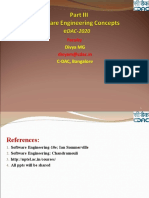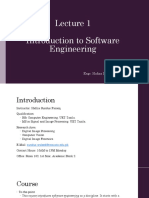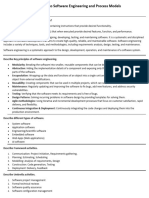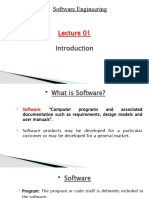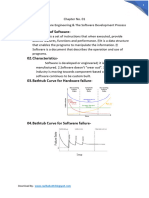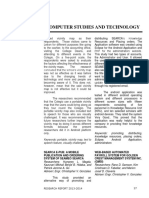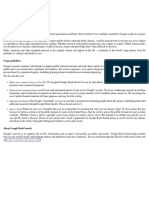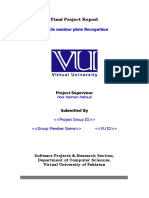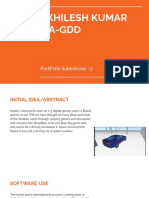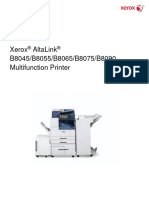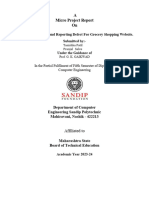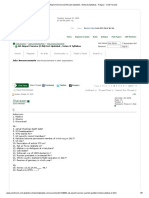0% found this document useful (0 votes)
27 views12 pagesSoftware Engineering Short Overview
The document provides an overview of software and software engineering, defining software as a collection of instructions and data that enables computers to perform tasks. It outlines various types of software, the software engineering process, and different process models, including prescriptive models like the Waterfall and Prototyping models. Additionally, it emphasizes the importance of planning, communication, and adaptation in software development to meet user needs effectively.
Uploaded by
nevej37738Copyright
© © All Rights Reserved
We take content rights seriously. If you suspect this is your content, claim it here.
Available Formats
Download as PDF, TXT or read online on Scribd
0% found this document useful (0 votes)
27 views12 pagesSoftware Engineering Short Overview
The document provides an overview of software and software engineering, defining software as a collection of instructions and data that enables computers to perform tasks. It outlines various types of software, the software engineering process, and different process models, including prescriptive models like the Waterfall and Prototyping models. Additionally, it emphasizes the importance of planning, communication, and adaptation in software development to meet user needs effectively.
Uploaded by
nevej37738Copyright
© © All Rights Reserved
We take content rights seriously. If you suspect this is your content, claim it here.
Available Formats
Download as PDF, TXT or read online on Scribd
/ 12





